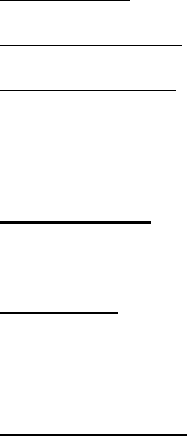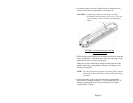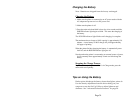
Accessing Advanced Software Features
through Windows
These features can be accessed using the software dialog boxes and
methods discussed below. For more detailed information, view the
“Read Me” file on the driver CD, if available.
In Windows CE, double tap on the PocketJet printer icon in the Control
Panel window.
In Windows 95/98/Me, use the path “Start:Settings:Printers:Pentax
PocketJet 3:Properties:Advanced”
In Windows 2000/XP, permanently change the advanced features using
“Start:Settings:Printers: Pentax PocketJet3:Printing
Preferences:Advanced” or the settings may be temporarily changed
using the “Print Setup” from your application.
Density Modes
You can set the print density to your preference from zero to 10. 0 is
the lightest, 7 is the default (medium), and 10 is the darkest.
2-Ply Mode
For special applications where 2-ply paper is needed, this setting makes
prints that are darker (and print slower) than the density mode set to 10
as listed above.
Form Feed Modes
You can set how the printer ejects paper by using the following
options.
• No Feed Mode - there is no paper feed at the end of a job. This is
typically used with non-perforated roll paper to save paper.
- No Feed Mode Extra Feed - this option is used in conjunction
with the No Feed Mode to eject paper by setting the number of
lines to be ejected (at 200-dpi for PocketJet 3 or 300-dpi for
PocketJet 3 Plus) after the end of a document.
NOTE: The “Extra Feed” mode only affects the last page of a
document if it is multipage. The bottom margin as selected by the
application has no effect. The top margin actually defines the total
top and bottom margin between pages of a multi-page job.
• Fixed Page Mode - the paper always feeds at the end of a job to
complete the vertical page size specified (i.e., letter, legal, A4, or
user-defined size). Use this with cut sheet paper
Page 27


















